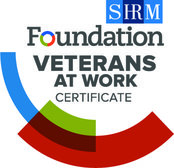Before the RFP Drops
Competitive Analysis/Price to Compete–this is looking at all external factors to understand your competition and determine what the competitive landscape will be. Think of this as coming up with a range of what would be competitive. This includes taking the following into consideration:
- Competition and assessing your competitor’s rates
- Government customer’s budget – current funding and projected forecasted spending
- Customer’s previous history and buying decisions
This is normally done well in advance of the RFP dropping and can be critical to the bid/no-bid decision. It also serves as a guide for strategic planning and vision. Are you looking at opportunities that make sense for your company?
Draft RFP/Initial RFP
Price to Win – this is a bottom-up build based on the draft RFP documents and final RFP documents. The end result is to model the Total Evaluated Price (TEP).
The inputs into the TEP (for example, the technical solution), are determined during the Competitive Analysis.
The outputs of the Price to Win analysis are to recommend specific strategies identified in competitors that can be incorporated into your internal pricing strategy. Price to Win should provide you with a comparison of labor categories, location, etc that are being priced by your competitors. You can use this information to compare to your own approach and make adjustments to your solution and to your pricing.
Strategic Pricing/Internal Focus – this is the bottom up and top down approach towards pricing out your technical solution. When done right, this is in lockstep with the technical team from the beginning. Factors taken into consideration:
- Lines of code, widgets required
- Hours and labor categories associated with each task, level of expertise required, labor rate
- Travel/ODCs, subcontractors as required
- Geographical location
- Quality Assurance/Testing process
- Certifications required
- Multipliers/Wrap-rates used
- Fee analysis
- Assumptions documented
Depending on available information, relationship with the agency and when the technical solution is developed, this should be done in advance of the final RFP hitting the street (in a perfect world).
After the RFP Drops
Proposal Pricing/Cost Volume/RFP Based – the actual cost volume, narrative and documentation for the audit file. This is the hard-core spreadsheet work, section B, documentation for the cost volume, and everything associated with the proposal as it relates to cost. Ideally, this is done with as much lead time as possible. In reality, it is always one of the last items to be complete as the pricer is waiting on subcontractor submissions, final verification of the staffing plan and any other shenanigans that come up in a color review. The goal is always to have it done in time for a thorough review. The key here is compliance, compliance, compliance. Follow the RFP to the T, focus on checking boxes and keep it simple.
If you need any help with the above, please reach out to BOOST. We have SME’s and strategic pricing experts who focus on each of the above areas and can support any phase of the pricing lifecycle.






